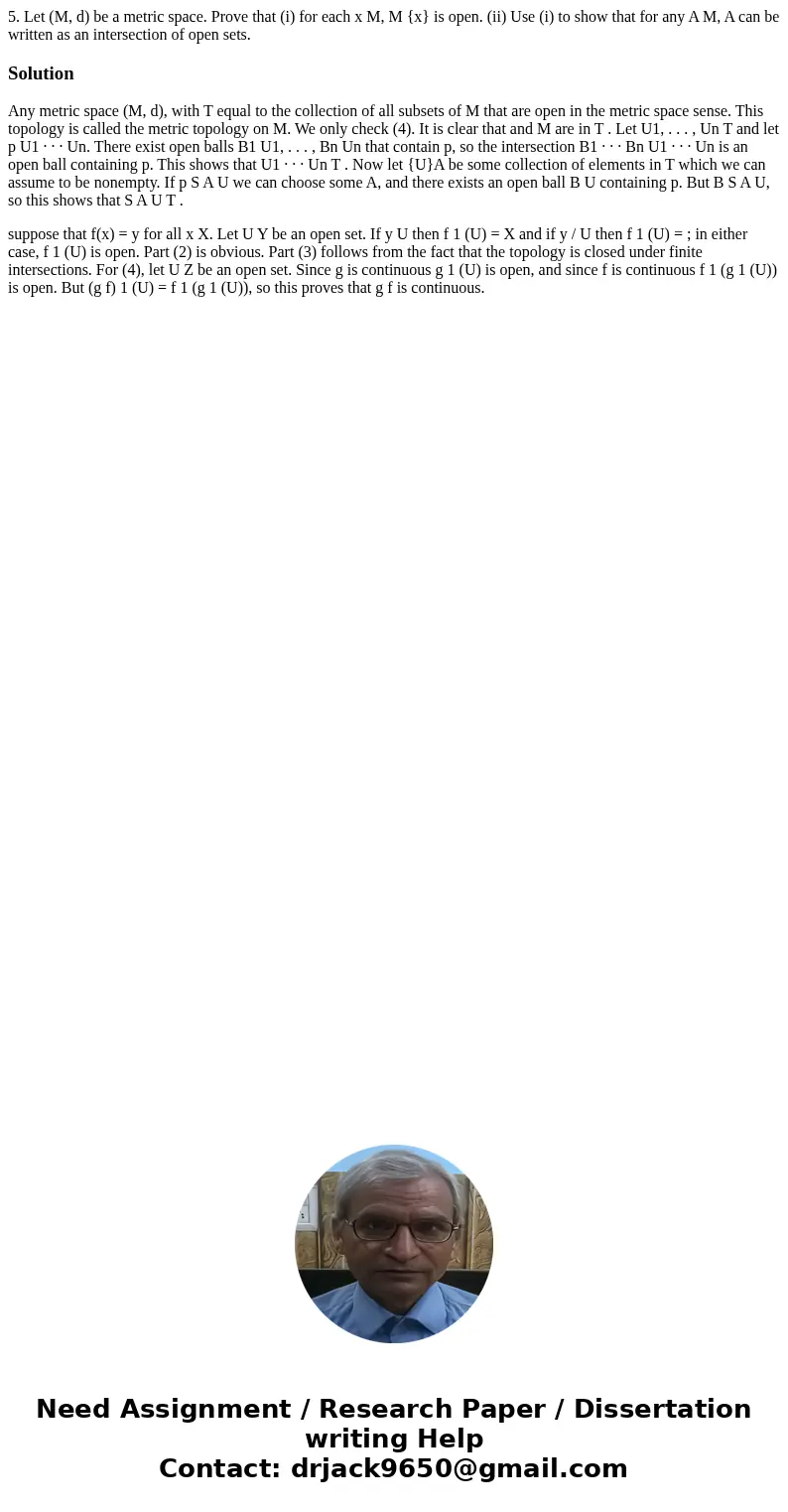5 Let M d be a metric space Prove that i for each x M M x is
5. Let (M, d) be a metric space. Prove that (i) for each x M, M {x} is open. (ii) Use (i) to show that for any A M, A can be written as an intersection of open sets.
Solution
Any metric space (M, d), with T equal to the collection of all subsets of M that are open in the metric space sense. This topology is called the metric topology on M. We only check (4). It is clear that and M are in T . Let U1, . . . , Un T and let p U1 · · · Un. There exist open balls B1 U1, . . . , Bn Un that contain p, so the intersection B1 · · · Bn U1 · · · Un is an open ball containing p. This shows that U1 · · · Un T . Now let {U}A be some collection of elements in T which we can assume to be nonempty. If p S A U we can choose some A, and there exists an open ball B U containing p. But B S A U, so this shows that S A U T .
suppose that f(x) = y for all x X. Let U Y be an open set. If y U then f 1 (U) = X and if y / U then f 1 (U) = ; in either case, f 1 (U) is open. Part (2) is obvious. Part (3) follows from the fact that the topology is closed under finite intersections. For (4), let U Z be an open set. Since g is continuous g 1 (U) is open, and since f is continuous f 1 (g 1 (U)) is open. But (g f) 1 (U) = f 1 (g 1 (U)), so this proves that g f is continuous.

 Homework Sourse
Homework Sourse